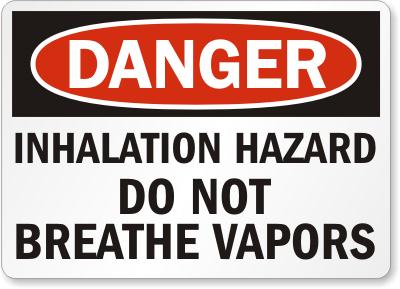Black Lung Cases on the Rise, Miners Demand Increased Safety Regulation
Black lung occurs from inhalation of toxic coal dust, which has been discovered at mining sates in increased quantities over the last decade (via MySafetySign.com).
July 9, 2012 — Cases of Black Lung Disease, or Coal Worker’s Pneumoconiosis, have nearly doubled since the 1990s. Not recognized or well understood until the 1950s, Black Lung disease looked to be curtailed by regulations implemented in the mid-1970s — but a recent study proves that it may be experiencing a resurgence at coal mining sites in the United States.
The most severe cases have occurred in the Appalachia region between eastern Kentucky, West Virginia, and southwestern Virginia. Here, surface mining has seen an excessive increase in cases, especially in younger miners. NPR finds that while in the early-1970s, black lung rates were at about 1% of evaluated mine workers; the rate is currently at 0.4%, the highest since the Federal Coal Mine Health and Safety act of 1969 and the Black Lung Benefits Act of 1973.
The act outlined benefits and payments for coal miners disabled by Pneumoconiosis. Payments, medical benefits, and compensation for families were offered through the act. Now, those with other 20 years of mining experience about double the risk of black lung as miners in the 1990s.
Two coalminers who were later diagnosed with black lung, after countless years of mining (via AraFiles).
Black lung is caused by excessive inhalation of coal dust and can be exacerbated by tobacco smoking. The inhaled dust remains in the lung and eventually destroys healthy tissue, making breathing and any sort of strenuous activity a monumental task. A diagnosis of the final stages of black lung is bleak and irreversible.
The latest cases, which show younger and less exposed miners with the disease, has highlighted the importance of new regulations for the mining industry. The Occupational Safety and Health Administration (OSHA) as well as the United Mine Workers of America, the miners’ union, have pressed for higher standards of health to protect the workers in one of the oldest and most stable industries in the United States. While compensation programs have helped ease the burden, they are clearly not enough as this rise in diagnoses shows a carelessness and drop in standards that must be rectified.
Some of the issues on which the new legislation should focus are an increase in work hours, and production pressure from a higher demand of coal. Samples of mine dust have shown a disregard of federal standards. In addition, as the number those affected increases, compensation programs will become less effective and helpful, causing another financial strain on an understaffed, overworked industry.
– K. Howitt















